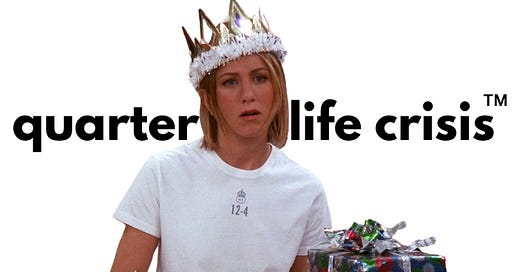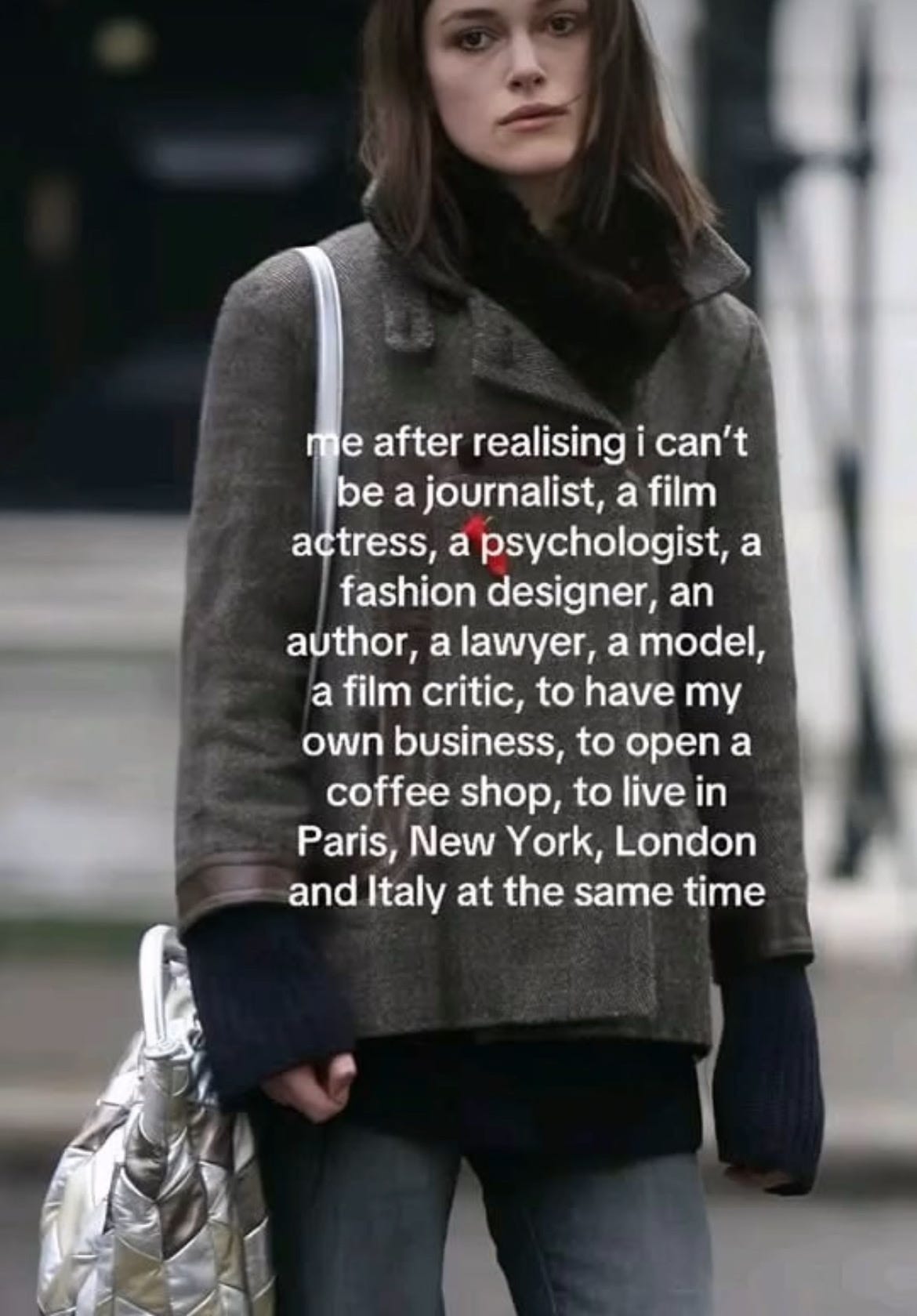When Maggie Mertens wrote for the Atlantic that TikTok and Instagram are currently filled with twenty-somethings signing up for marathons, I sheepishly thought about my new Strava addiction and the similar goals I had for myself. We are officially in a time where having children, a stable career, an affordable living situation, a long term partner and independence seems harder to attain than running for 42.195 kilometres straight.
Running from what? I’m still figuring that one out, but it seems to be a case of narrowing down the options rather than struggling to find them.
As you approach 25, you start to hear about The Quarter Life Crisis a lot. A change in friendship groups, jobs or career, study path, or values is no longer an intentional lifestyle change but indicative of the apparent inner turmoil that seemingly onsets with the development of one’s frontal lobe.
Despite its name, most people don’t live on to repeat 25 years another three times. Globally, on average, we’ll be lucky to repeat it twice again. Inequalities in healthcare, education and access to welfare services will likely influence that number quite significantly. Yet the quarter life crisis arguably has less to do with how much time has passed in one’s life, and more to do with the particular stage of life that they’re in.
It’s the shift from structured life in institutions like school and university, living at home, dependence on others, to an open ended life of opportunity. It brings new and exciting adventures, yet often leads to angst and overwhelm when we realise we haven’t prepared for the struggle that adulting is.
According to Satya Doyle Byock, the author of Quarterlife: The Search for Self in Early Adulthood, “young people may feel “both logistically disoriented—genuinely not knowing how to pay rent or what to do—but also deeply existentially disoriented.” Disorientation in a world you were apparently set up for success in is a rather disorienting experience. Is double disorientation a thing?
Dr Robinson of the University of Greenwich says our quarter life crises can be “locked in” or “locked out”, and for the unfortunate majority (that’s an anecdotal addition from me) involves both. A locked out crisis occurs when we feel that our efforts to achieve a given goal fall flat. It’s the disappointment that comes with being ghosted by the entire professional world after sending some 57 job applications following several years of study. A locked out crisis occurs when finally, you get the job, and it’s trash. What now? Giving up would feel like a major betrayal to the person who sent those 57 applications and spent Friday nights writing theses that they’d never read again. So we put on a façade, pretend it’s all fine, and secretly question why we ever chose this career path in the first place.
We get caught by the sunk costs fallacy. We forget our future selves have agency. We forget we can change paths. We are, thankfully, not indebted to the efforts of our former selves.
But in a cost of living crisis, staying in the job is often kind of the only option. Gen Z are currently between a rock and a very hard place, finding ourselves in these situations with little wiggle room to switch it up and try again.
This only feels more intense when we think back on our expectations for our twenties. Any (albeit absurd) hopes I still held onto that my twenties would somehow match that of the Rachel Greens and Carrie Bradshaws of the world seriously diminished when I realised just how different their economic circumstances were from mine or practically anyone else in their twenties in 2025. Did they also live on edge wondering how they’d pay their rent the next month when their landlord inevitably puts it up again? They were certainly less time poor than most of us, and I don’t remember either of them standing in a grocery store wondering if they should risk getting scurvy for another week while the fresh food isle seems to have had some kind of Erewhon rebranding (but only next to the dollar sign). And for those of us still living in our childhood bedrooms, I certainly don’t remember that specific experience reflected on my screen.
Statistically, I if I decide to own a property, I will be 36 before that happens and even then my mortgage will be eight times my salary. For boomers, a mortgage was three times their salary with majority owning property between 25 and 39. Chuck in a gender pay gap, which worsens if I have children, and we can expect to push my alleged property owning age back a few more years.
But even if I give up on this property dream, if I have any kind of social media I’m likely being encouraged to ‘self-optimise’ myself into the latest productivity-obsessed, green smoothie drinking, LED face mask wearing, to-do planner bearing, perpetually conventionally attractive person that apparently represents a woman in their mid-twenties. Thank goodness for social media advertising and the myriad of gadgets at my fingertips that will allegedly fix all of the problems that I never knew I had until they raised them! Today, to physically peak in your twenties seems to cost your left kidney and 5 avocados.
We’re being informed covertly every day that we aren’t enough, and that there’s always something else to buy or do to be the best version of ourselves. Before we even make it to the official quarter life crisis we’re in a perpetual self-critical cycle; wondering if we’re doing enough, comparing ourselves, questioning our place in the world. Sadly, we’re actually used to this line of thinking before we even make it to our quarter life crises. The official crisis just adds that extra spice.
I could go on, and I do (lol) in this video:




